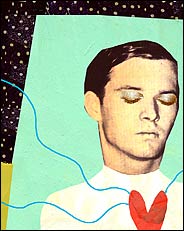Tuesday, April 26, 2005

Far From the Medical Trenches, It's O.K. to Laugh
By LARRY ZAROFF, M.D.
The thing about surgery - as in the verb form, doing surgery - is that it is so serious.
But after surgeons retire, it becomes a noun, a memory, selective. And what surgeons like to remember about their surgical adventures is how funny they could be.
Long ago, at 2 a.m., I was helping a resident close an emergency heart valve replacement at the general hospital where we had our cardiac surgical practice. I had missed dinner and was thinking of an early breakfast when my hunger pangs were eliminated by a phone call from the Park Avenue Hospital, a 50-bed neighborly institution, mostly a place for minor surgery, never heart operations.
The caller, a resident in hematology covering the indigent population to supplement his house officer's pay, sounded concerned when he said the patient's blood pressure was a bit low. It was not from natural causes that Bobby was a patient. Rather, he was a victim of his lady friend. The lady had left the young man on the doorstep with a stab wound to the left chest. Not only had she delivered the patient but, as we learned later, she had delivered the stab wound.
Suspecting the worst, at the worst of times - 3 a.m., operating on a stab wound of the heart, where no heart surgery was done - I drove to the hospital. The weather, a storm, matched my expectations.
When I arrived, the patient's blood pressure was teetering at 70 over 40, and his pulse was ephemeral. It was too late to move him to our well-staffed and equipped cardiac surgical center.
He smelled awful, like a pericardial tamponade - a collection of blood between the fibrous sac enclosing the heart and the heart muscle. The blood leaking from the heart, having no place to go, was accumulating and compressing the heart so that it could not pump. Like a vise squeezing the heart.
Ordinarily, repairing a stab wound of the heart is a simple procedure, but at the Park Avenue, it was going to be like climbing out of a crevasse without a rope.
Two anesthesiologists worked at the Park Avenue. One, Izzy Cohen, lived two blocks away, and I called him to hustle over.
Now Izzy was not a hustler; he was well into his 70's, and anesthesia was a part-time job for him - he earned his living at general practice. Izzy arrived at one of the two small operating rooms, rarely used for more than hernia repairs and extractions of wisdom teeth, just as the resident and I were hurrying the gurney into the room.
The resident had been through medical training and was in his second year of a hematology fellowship. As for surgical experience, he told me later he had not been in the operating room since his third year of medical school, and the only blood he had seen recently was under a microscope.
Given these circumstances, it was appropriate for the patient to crash. Doctors hate blue - thus the hospital loudspeaker's arcane refrain, "Code blue, code blue," signifying a cardiac arrest. Bobby was blue.
Simultaneously rolling the patient onto the operating table, asking for a knife and urging my resident to help was a bit overwhelming for Izzy. I heard a small groan from his end of the table.
The lack of anesthesia, the absence of gloves or any other aspect of sterility may not have bothered the patient - he was unconscious - but it seemed to be having an adverse effect on my anesthesiologist and my hematologist, who were numbed by the events.
I couldn't come to their aid. One slash opened Bobby's chest. I found a tense pericardium containing dark blood, which when opened to the reward of a waking patient and a returning blood pressure, revealed a one-inch gash of the right ventricle, the heart chamber that pumps blood to the lungs. Now the patient, awake, tried to leave the operating room with his heart poking out of his chest.
This locomotion inspired Izzy to anesthetize him and insert a breathing tube.
In this moment of leisure, I spied my hematologist hunkered in the corner, eyes closed.
Red blood cells moving on their own out of the heart under pressure was a situation not entirely familiar to him.
The rest of the procedure was uneventful; a few silk sutures repaired the damage.
As the resident returned to consciousness, I was able to initiate the surgical routine of sterility, don gloves and gown, and close the chest.
The emergency over, I asked Izzy how things were. His response, unmasked, remains noteworthy: "And there he was, no respirations, no blood pressure, no pulse and no insurance."
It turned out that old Izzy was right. The patient, who recovered uneventfully, had no insurance. After his stabber spurned him a second time, he appeared once more at the hospital, with two broken legs, the culmination of a suicide jump from a two-story window.
I heard that he still had no insurance, but that Izzy did the anesthesia for his fractures.
Copyright 2005 The New York Times Company | Home | Privacy Policy | Search | Corrections | RSS | Help | Back to Top
